The first annual BGSU “Tipover for Hemophilia” competition, sponsored by Student Activities and the Northwest Ohio Hemophilia Foundation, was held in the activities area of Student Recreation Center in February 1979 on the 5th, 12th, and 19th.
According to Gregory T. DeCrane, director of Student Activities, the idea for the tipover event stemmed from a man’s an attempt to break a world record by setting up 100,000 dominoes for the H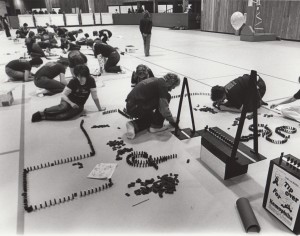 emophilia Foundation. Dr. Paul F. Haas, president of the Northwest Ohio Hemophilia Foundation and associate professor of economics, asked DeCrane if Student Activities could set up a tipover competition to raise awareness of the serious effects of hemophilia, as well as money for the Hemophilia Foundation. DeCrane and three others developed the competition rules and promoted the event. According to Tom D. Abrahamson, graduate assistant for Student Activities, BGSU was the first university to pick up the “Tipover for Hemophilia” competition as a student program.
emophilia Foundation. Dr. Paul F. Haas, president of the Northwest Ohio Hemophilia Foundation and associate professor of economics, asked DeCrane if Student Activities could set up a tipover competition to raise awareness of the serious effects of hemophilia, as well as money for the Hemophilia Foundation. DeCrane and three others developed the competition rules and promoted the event. According to Tom D. Abrahamson, graduate assistant for Student Activities, BGSU was the first university to pick up the “Tipover for Hemophilia” competition as a student program.
The competition consisted of three elimination rounds. During each round, five-mmber teams built and knocked down domino structures. Teams were awarded points according to the amount of money raised, creativity of the formations, fastest setup time, successful execution of the five required moves, and the slowest falling-down time. The four teams with the highest number of points proceeded to round two, and two teams from the second round faced off in the final round.
The event began on February 5, 1979, with six teams and 1,000 dominoes. Durin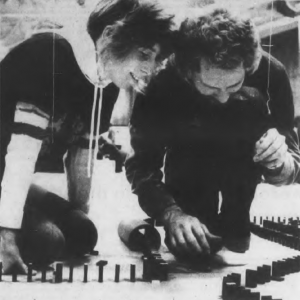 g the semifinals on February 12, three teams competed using 2,500 dominoes, and during the finals on February 19, the remaining two teams each set up 5,000 dominoes. During the first round of competition a category was added for the most pledges obtained by a team. However, the team was only permitted to collect 100 percent of its pledges if the formation did not have to be restarted. Each time the formation was restarted, 10 percent was deducted from the pledge. During the 1979 competition almost $550 was pledged according to DeCrane.
g the semifinals on February 12, three teams competed using 2,500 dominoes, and during the finals on February 19, the remaining two teams each set up 5,000 dominoes. During the first round of competition a category was added for the most pledges obtained by a team. However, the team was only permitted to collect 100 percent of its pledges if the formation did not have to be restarted. Each time the formation was restarted, 10 percent was deducted from the pledge. During the 1979 competition almost $550 was pledged according to DeCrane.
The Pushovers team, made of up Al Linne, hall director of Rodgers Quadrangle, and four other hall directors from the Office of Residence Life, won the first tipover competition against the 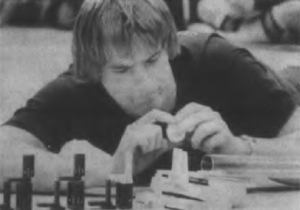 A-B Staff team (short for Anderson-Bromfield), which consisted of John Vautier, Anderson hall director, a resident, and three resident advisors from Chapman, Anderson, and Bromfield. Referencing the hours involved and construction of extra gimmicks, Al Linne commented that he “didn’t know it was going to get this elaborate.” The Pushovers brainstormed and practiced setting up their formations the Sunday nights before the competitions. During the final round, The Pushovers started their formation with a one-inch toy robot that pushed the first domino off a tripod located on the mezzanine (balcony). The domino then traveled down a string pulley to the main floor area. In a previous round, the team used a water pistol to start.
A-B Staff team (short for Anderson-Bromfield), which consisted of John Vautier, Anderson hall director, a resident, and three resident advisors from Chapman, Anderson, and Bromfield. Referencing the hours involved and construction of extra gimmicks, Al Linne commented that he “didn’t know it was going to get this elaborate.” The Pushovers brainstormed and practiced setting up their formations the Sunday nights before the competitions. During the final round, The Pushovers started their formation with a one-inch toy robot that pushed the first domino off a tripod located on the mezzanine (balcony). The domino then traveled down a string pulley to the main floor area. In a previous round, the team used a water pistol to start.
The A-B Staff team also experimented with various gimmicks including a high-pitched frequency device that turned on the power of an electric typewriter. The first domino was knocked over when the carriage returned. The A-B Team also used candles and pendulums to set off four mousetraps, sending dominoes flying in the air.
The competition was held annually until at least 1983, and in 1980 BGSU teams competed against teams from the University of Toledo in the first intercollegiate competition of its kind in the United States. During the 1980 competition, the BGSU Residence Life team defeated The University of Toledo team, and the competition raised more than $930 for the Hemophilia Foundation.
For more information about the History of Recreation and Wellness, visit our webpage.


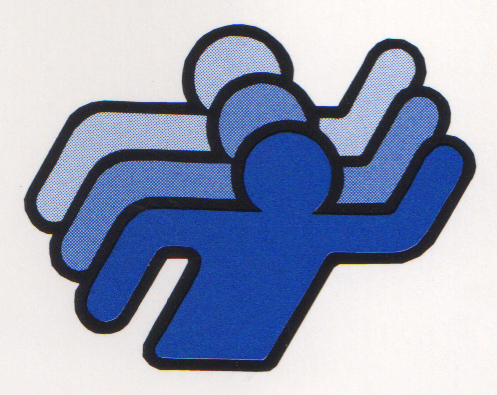
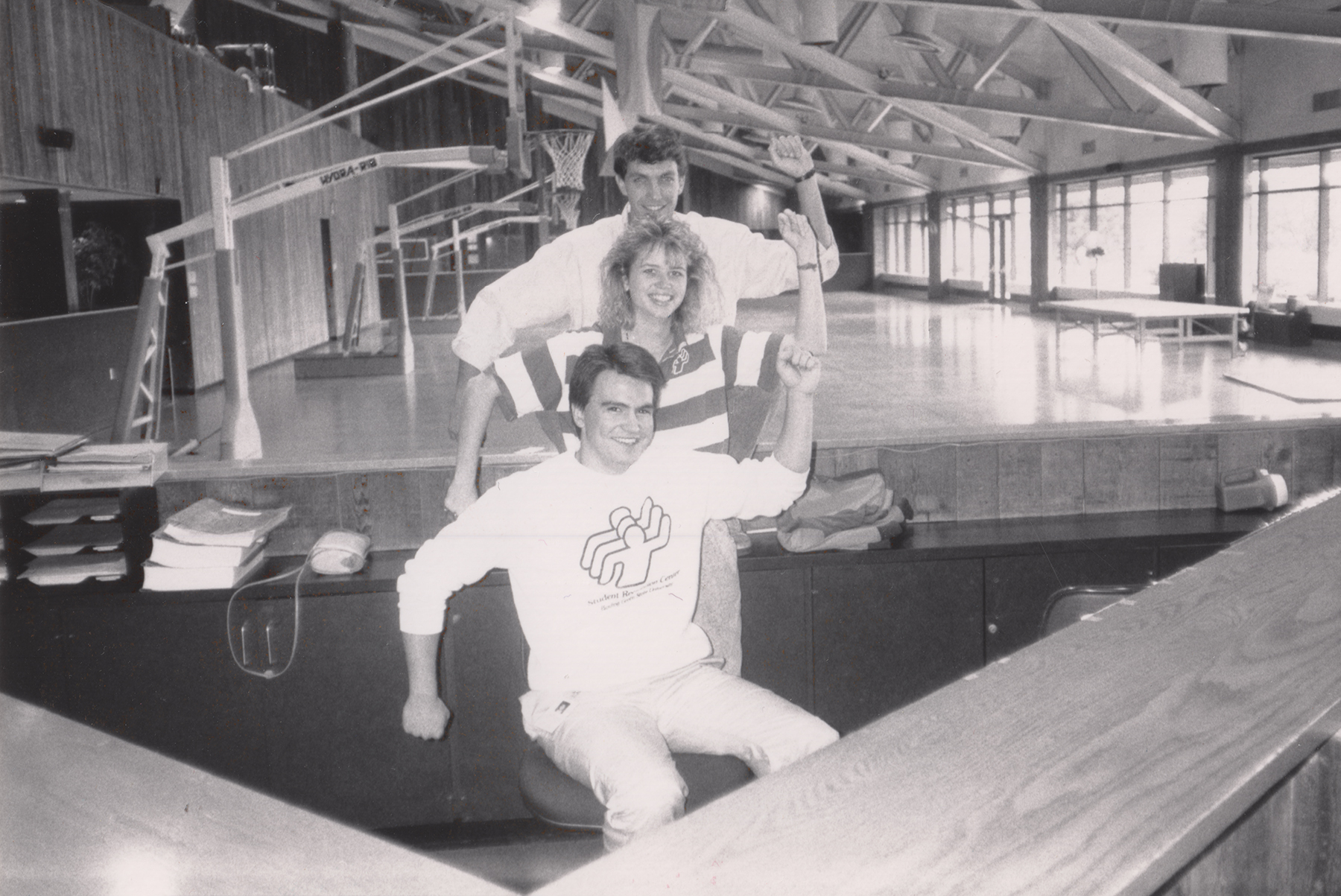
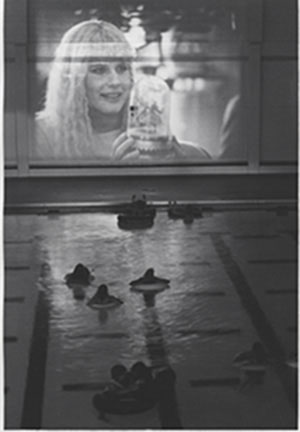


 emophilia Foundation. Dr. Paul F. Haas, president of the Northwest Ohio Hemophilia Foundation and associate professor of economics, asked DeCrane if Student Activities could set up a tipover competition to raise awareness of the serious effects of hemophilia, as well as money for the Hemophilia Foundation. DeCrane and three others developed the competition rules and promoted the event. According to Tom D. Abrahamson, graduate assistant for Student Activities, BGSU was the first university to pick up the “Tipover for Hemophilia” competition as a student program.
emophilia Foundation. Dr. Paul F. Haas, president of the Northwest Ohio Hemophilia Foundation and associate professor of economics, asked DeCrane if Student Activities could set up a tipover competition to raise awareness of the serious effects of hemophilia, as well as money for the Hemophilia Foundation. DeCrane and three others developed the competition rules and promoted the event. According to Tom D. Abrahamson, graduate assistant for Student Activities, BGSU was the first university to pick up the “Tipover for Hemophilia” competition as a student program. g the semifinals on February 12, three teams competed using 2,500 dominoes, and during the finals on February 19, the remaining two teams each set up 5,000 dominoes. During the first round of competition a category was added for the most pledges obtained by a team. However, the team was only permitted to collect 100 percent of its pledges if the formation did not have to be restarted. Each time the formation was restarted, 10 percent was deducted from the pledge. During the 1979 competition almost $550 was pledged according to DeCrane.
g the semifinals on February 12, three teams competed using 2,500 dominoes, and during the finals on February 19, the remaining two teams each set up 5,000 dominoes. During the first round of competition a category was added for the most pledges obtained by a team. However, the team was only permitted to collect 100 percent of its pledges if the formation did not have to be restarted. Each time the formation was restarted, 10 percent was deducted from the pledge. During the 1979 competition almost $550 was pledged according to DeCrane. A-B Staff team (short for Anderson-Bromfield), which consisted of John Vautier, Anderson hall director, a resident, and three resident advisors from Chapman, Anderson, and Bromfield. Referencing the hours involved and construction of extra gimmicks, Al Linne commented that he “didn’t know it was going to get this elaborate.” The Pushovers brainstormed and practiced setting up their formations the Sunday nights before the competitions. During the final round, The Pushovers started their formation with a one-inch toy robot that pushed the first domino off a tripod located on the mezzanine (balcony). The domino then traveled down a string pulley to the main floor area. In a previous round, the team used a water pistol to start.
A-B Staff team (short for Anderson-Bromfield), which consisted of John Vautier, Anderson hall director, a resident, and three resident advisors from Chapman, Anderson, and Bromfield. Referencing the hours involved and construction of extra gimmicks, Al Linne commented that he “didn’t know it was going to get this elaborate.” The Pushovers brainstormed and practiced setting up their formations the Sunday nights before the competitions. During the final round, The Pushovers started their formation with a one-inch toy robot that pushed the first domino off a tripod located on the mezzanine (balcony). The domino then traveled down a string pulley to the main floor area. In a previous round, the team used a water pistol to start.